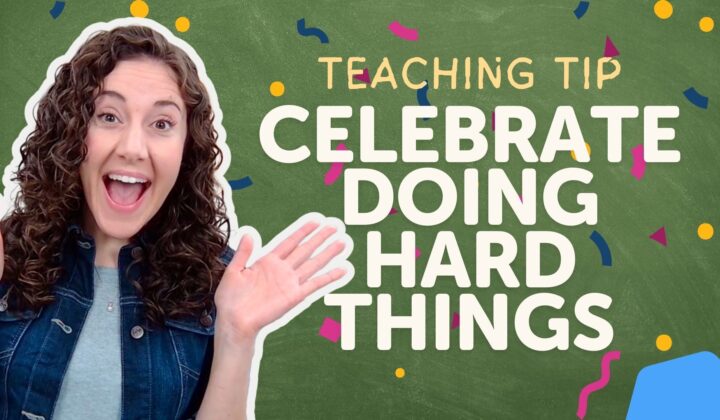Learn more about the journey that led to us equipping kids to carefully evaluate every idea they encounter.
Meet members of our team who have contributed to curriculum development.
Hear from real users of the Foundation Curriculum.
Learn what we believe about God, Jesus, Scripture, and more.
Teaching Tip: Incorporate Movement Throughout the Day
Hello, friends! I’m Elizabeth Urbanowicz with Foundation Worldview, and today’s Teaching Tip is a way that you can motivate a child in their learning. And this tip is to be sure to incorporate movement throughout the day.
We often underestimate how important it is for the children we are teaching to move their bodies throughout the day.
A Biblical Foundation for Movement
Scripture is clear that God has designed us as both body and soul.
Genesis 2:7 reads:
“Then the Lord God formed the man of dust from the ground and breathed into his nostrils the breath of life, and the man became a living creature.”
This passage makes clear that God created a physical body for us. He formed Adam out of the dust of the ground, and then He breathed into Adam the breath of life, and he became a living creature.
The Hebrew word that is translated in English as “creature” or in some translations “being” is the Hebrew word nefeš.
And the word nefeš is consistently translated soul throughout the rest of Scripture. So, we should make sure that we are seeking to understand God's design for the children we are teaching as both body and soul, and then we should tailor our instruction according to that design.
The Science of Why Movement Matters
From what we know of the human body, we understand that God has designed our brains to need a continual flow of oxygen in order to function properly.
Oxygen is carried to the brain on red blood cells. But when we—or the children we are teaching—are seated for extended periods of time, our blood flow slows, and oxygen is carried to the brain at a much slower rate, making it more difficult for us to think clearly.
So if we’re expecting the children we are teaching to sit for long periods, we’re not actually aligning our instruction with God’s design for their bodies. We need to make sure that they are not seated for extended periods, so that their blood continues to flow, and their brains receive sufficient oxygen for deep thinking.
Practical Guidelines for Incorporating Movement
So how do we incorporate this in a realistic, structured way?
1. Outdoor or Unstructured Play Every 2–3 Hours
Make sure that the children you are teaching have time for outdoor or unstructured play every two to three hours.
This might seem like a lot—and it may seem very frequent—but research has revealed that this kind of movement pays off in big dividends when it comes to a child’s learning.
Back when I was a classroom teacher, this was a mistake I made often in my early years. My students had a scheduled noon recess, and they were also supposed to have a morning recess.
But when it was cold outside, I would frequently just keep morning recess inside—honestly, just selfishly because I didn’t want to go out into the cold.
However, several years into teaching, after reading studies about how important it is for children to move their bodies and get outside, I changed my practice.
I started putting on my coat, my hat, my scarf, and my gloves, and I would head outside with my students for morning recess—because I realized how important that movement and outdoor time really was.
2. Move Seating Locations Every 15–20 Minutes
Another helpful tip is to have the children you’re teaching move from one sitting position to a different location every 15 to 20 minutes.
Even if they still need to be seated, simply getting up and moving from one place to another:
-
Gets their bodies up
-
Gets their hearts pumping faster
-
Increases blood flow
-
And gets more oxygen to their brain
When I learned how important this was, I began shifting my classroom structure.
Every 15 minutes during a lesson, I would move my students:
-
From their desks to the rug at the front of the classroom
-
And then from the rug back to their desks
-
And then back again
We just went back and forth from desks to rug all day long. This simple routine kept them moving and supported their ability to focus and think.
Movement with Structure
Now of course, we do need to have guidelines.
We’re not just going to let the children we are teaching have a free-for-all or choose to do whatever they want whenever they want. But we can have structured guidelines that still incorporate movement and outside play consistently throughout the day.
Final Reminder
Just as a reminder, today’s Teaching Tip was: Incorporate movement throughout the day.
Thanks so much for joining me for this Teaching Tip, and I’ll see you next time!
Related Posts and insights

Enhancing Comprehension with Non-Linguistic Representations
Boost comprehension with non-linguistic representations! Learn how using pictures alongside words enhances learning and aligns with a biblical worldview.

Building Stamina for Sustained Silent Reading: A Strategy for Enhancing Focus and Comprehension
Learn how to build reading stamina in children for better focus and Scripture comprehension with practical, step-by-step guidance.

Cultivating a Love for Hard Work in Educational Settings
Discover how to encourage hard work in kids through biblical principles and practical challenges in our latest Teaching Tips article.
